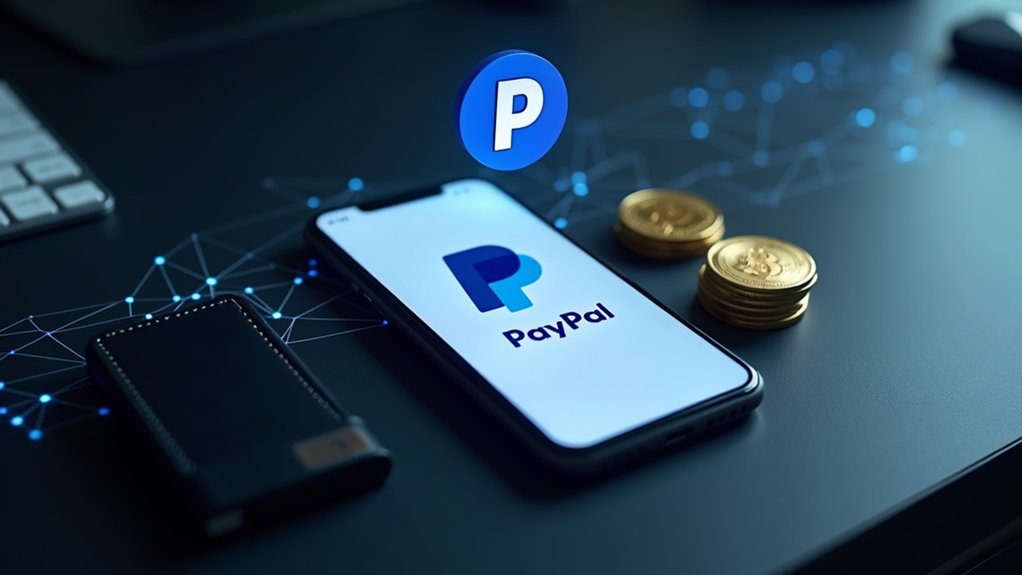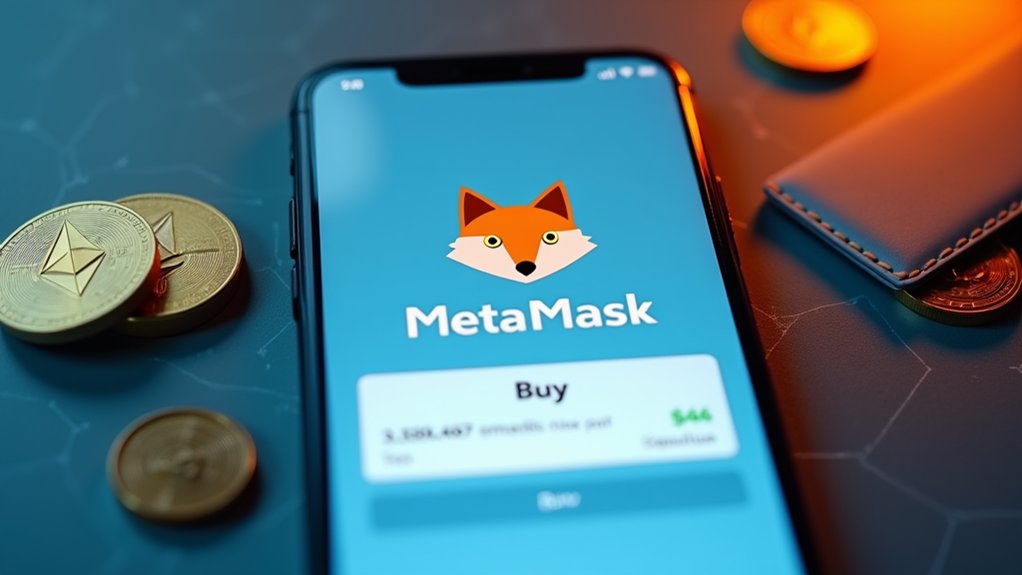DeFi lending operates on blockchain technology through smart contracts that automate peer-to-peer cryptocurrency transactions without intermediaries. These protocols utilize overcollateralization, typically at 150% or higher, to secure loans and implement automatic liquidation procedures during market volatility. Participants include liquidity providers who earn interest, borrowers who provide collateral, and governance token holders who influence platform parameters. Despite risks from smart contract vulnerabilities and regulatory uncertainty, DeFi lending offers transparent, permissionless financial access across borders. Further exploration reveals how this system is redefining capital allocation in the digital economy.

While traditional financial systems have long relied on centralized institutions to facilitate lending, Decentralized Finance (DeFi) lending has emerged like a revolutionary alternative that operates entirely on blockchain technology. Through the implementation of smart contracts, these protocols automate transactions without intermediaries, enabling peer-to-peer crypto lending where users can either supply assets to liquidity pools as lenders or borrow funds against collateral. The elimination of traditional gatekeepers has democratized access to financial services across borders, allowing participation regardless of geographic location or credit history.
The fundamental architecture of DeFi lending revolves around collateralization ratios, typically set at 150% or higher, which protect lenders through automated liquidation procedures should the value of a borrower's collateral decline below established thresholds. These protocols often feature flash loans mechanism that allows users to borrow without collateral if repaid within a single transaction block. Lending pools aggregate deposited funds for efficient distribution to borrowers, while blockchain technology enables instant transaction processing, greatly reducing the settlement delays common in conventional banking. Interest rates adjust dynamically according to supply and demand metrics within these pools, creating market-responsive yields that frequently surpass traditional savings instruments. Similar to yield farming, depositors in DeFi lending platforms can earn passive income through the interest generated on their contributed capital.
Participation in DeFi lending ecosystems includes several distinct roles: liquidity providers who earn interest on deposited assets, borrowers who access funds by securing loans with collateral, protocols like Aave or Compound that establish lending parameters, liquidators who execute collateral seizures when necessary, and governance token holders who influence platform decisions within decentralized autonomous organizations. The open access nature of DeFi lending allows anyone to participate in loan pools without geographical restrictions, increasing financial inclusion worldwide.
Despite these advantages, participants face considerable risks including smart contract vulnerabilities that can lead to hacks, extreme market volatility triggering unexpected liquidations, regulatory uncertainty, user errors in collateral management, and fundamental dependence on collateral stability.
The transparent nature of blockchain transactions guarantees complete auditability of DeFi lending activities, while the absence of credit checks lowers barriers to entry considerably. These systems operate continuously without interruption, allowing for 24/7 loan origination and management through automated processes that eliminate human bias and inefficiency, fundamentally redefining how capital allocation functions in the digital economy.
Frequently Asked Questions
How Do Defi Lending Protocols Handle Liquidations?
DeFi lending protocols handle liquidations through automated mechanisms that monitor collateralization ratios continuously, triggering smart contract executions when positions fall below predetermined thresholds.
These systems incentivize third-party liquidators with discounted collateral purchases, typically 5-10% below market value, while implementing various risk mitigation strategies including health factor models, multi-oracle price feeds, and dynamic liquidation parameters that adjust to market volatility.
Ultimately, these measures aim to preserve protocol solvency during adverse market conditions.
What Are the Tax Implications of Defi Lending?
DeFi lending activities trigger multiple taxable events, including interest earned being taxed like ordinary income at fair market value upon receipt, yield farming rewards requiring similar treatment, and liquidation events generating capital gains or losses.
Users must report these transactions on appropriate IRS forms, with lenders facing income tax obligations while borrowers generally avoid taxation at loan origination but may incur tax liabilities during repayment or collateral liquidation.
Thorough documentation remains essential for compliance.
Can I Use NFTS as Collateral for Defi Loans?
NFTs can indeed serve in the role of collateral for DeFi loans through several established mechanisms.
Borrowers may utilize peer-to-peer lending marketplaces where NFT collateralization terms are negotiated directly with lenders, or engage with protocol-based lending platforms that employ smart contracts to access pooled liquidity.
Additionally, non-fungible debt positions (NFDPs) represent an emerging financial instrument that transforms NFT-backed debt into tradable assets, providing liquidity while maintaining ownership of the foundational digital asset.
How Do Flash Loans Work in Defi Lending?
Flash loans in DeFi operate like uncollateralized borrowing mechanisms that execute, utilize, and repay funds within a single atomic blockchain transaction.
These loans utilize smart contract technology to enforce immediate repayment, eliminating counterparty risk through automatic transaction reversal if repayment conditions fail.
Primarily utilized for arbitrage opportunities, collateral swaps, and debt restructuring, flash loans require no credit checks or traditional collateral, instead relying on programmatically enforced liquidation safeguards that prevent defaults through transaction atomicity.
Are Defi Lending Platforms Regulated by Financial Authorities?
DeFi lending platforms currently exist in a regulatory gray area, with oversight varying considerably by jurisdiction.
While traditional financial authorities have not fully integrated these platforms into existing frameworks, regulatory approaches are evolving rapidly.
The SEC may assert jurisdiction when platforms exhibit centralized characteristics, while the EU's MiCA provides exemptions for fully decentralized protocols.
This fragmented landscape creates compliance challenges as authorities struggle to identify responsible entities within decentralized governance structures.









